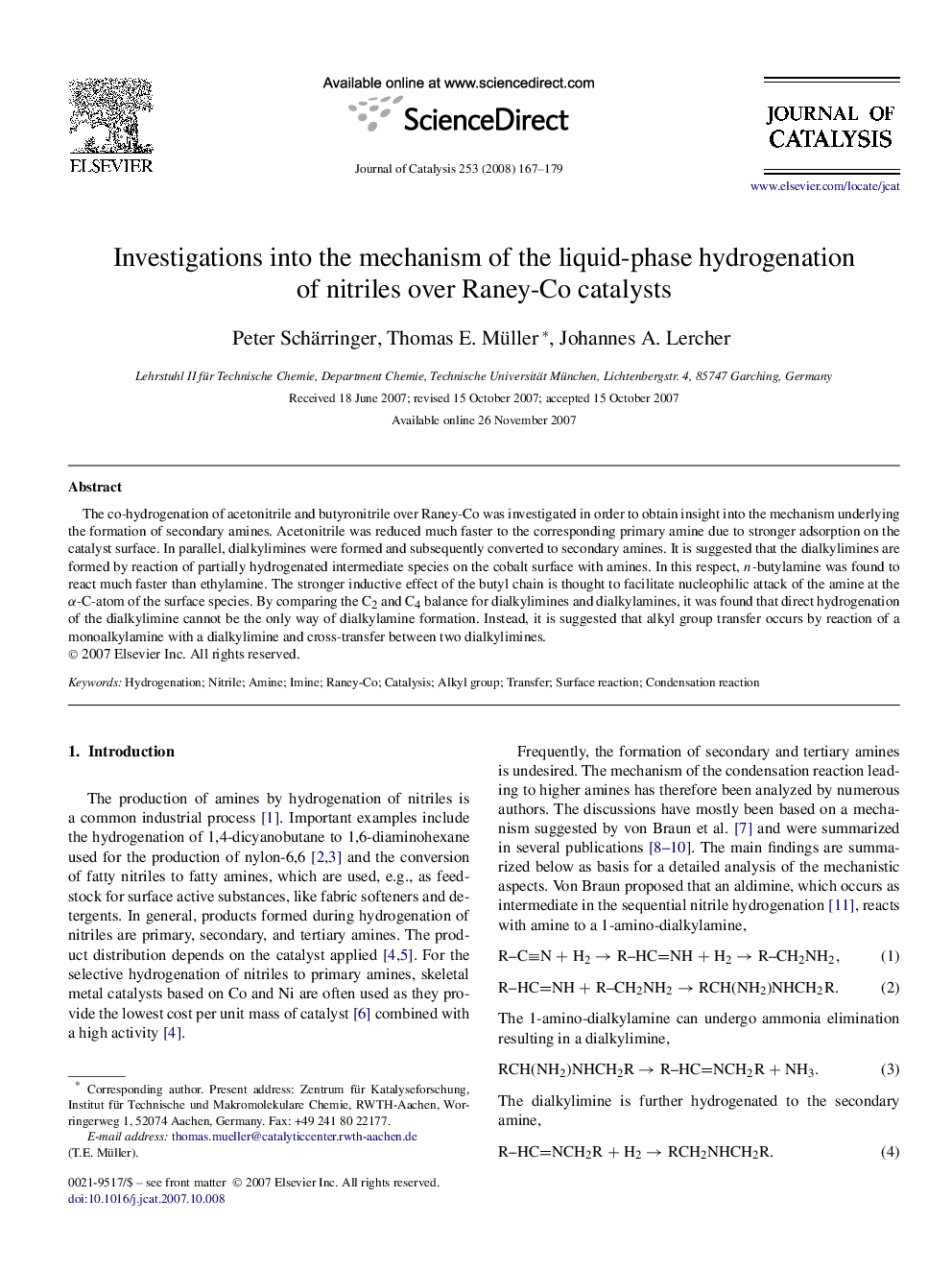| Article ID | Journal | Published Year | Pages | File Type |
|---|---|---|---|---|
| 62546 | Journal of Catalysis | 2008 | 13 Pages |
The co-hydrogenation of acetonitrile and butyronitrile over Raney-Co was investigated in order to obtain insight into the mechanism underlying the formation of secondary amines. Acetonitrile was reduced much faster to the corresponding primary amine due to stronger adsorption on the catalyst surface. In parallel, dialkylimines were formed and subsequently converted to secondary amines. It is suggested that the dialkylimines are formed by reaction of partially hydrogenated intermediate species on the cobalt surface with amines. In this respect, n-butylamine was found to react much faster than ethylamine. The stronger inductive effect of the butyl chain is thought to facilitate nucleophilic attack of the amine at the α-C-atom of the surface species. By comparing the C2 and C4 balance for dialkylimines and dialkylamines, it was found that direct hydrogenation of the dialkylimine cannot be the only way of dialkylamine formation. Instead, it is suggested that alkyl group transfer occurs by reaction of a monoalkylamine with a dialkylimine and cross-transfer between two dialkylimines.
